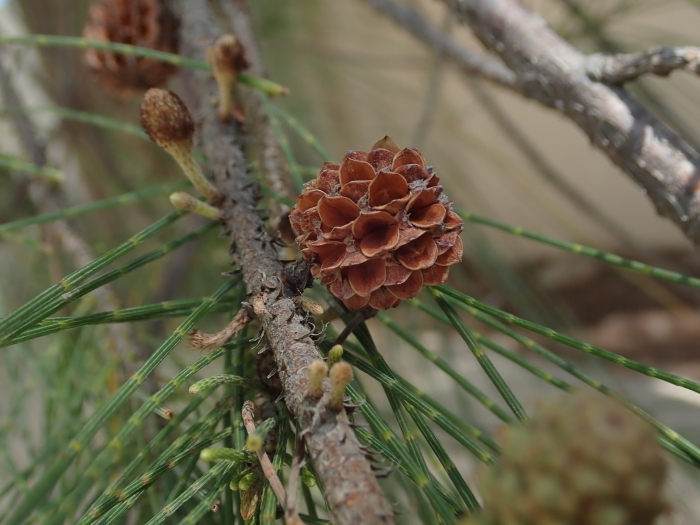Australian Pine
(Casuarina equisetifolia)
Australian Pine (Casuarina equisetifolia)
/
/

Daniel Cahen
CC BY 4.0






















































Estimated Native Range
Summary
Australian Pine is valued for its ability to stabilize sandy soils and is often used in coastal and windbreak plantings. It is also used for timber and as a shelterbelt tree. In cultivation, it requires full sun, medium water, and well-drained soils. It is relatively low-maintenance but can become invasive outside its native range. Its invasive potential is due to its prolific seed production and ability to outcompete native vegetation. Gardeners should be cautious about planting it in regions where it is known to be invasive.CC BY-SA 4.0
Plant Description
- Plant Type: Tree
- Height: 20-40 feet
- Width: 30-50 feet
- Growth Rate: Rapid
- Flower Color: N/A
- Flowering Season: Spring
- Leaf Retention: Evergreen
Growth Requirements
- Sun: Full Sun
- Water: Medium
- Drainage: Fast, Medium
Common Uses
Bird Garden, Drought Tolerant, Edible*Disclaimer: Easyscape's listed plant edibility is for informational use. Always verify the safety and proper identification of any plant before consumption., Erosion Control, Low Maintenance, Salt Tolerant
Natural Habitat
native to coastal regions in Australia and the Malay Archipelago, often found in sandy soils, and is tolerant of salt spray, making it common in beach and dune ecosystems
Other Names
Common Names: Coastal She-Oak, Beach Sheoak, Whistling Pine, Australian Beefwood, Australian-Pine, Beefwoodtree, Horsetail She-Oak, Horsetailtree, Whistling-Pine, Whistlingtree
Scientific Names: , Casuarina equisetifolia, Casuarina litorea, Casuarina equisetifolia var. incana, Casuarina muricata, Casuarina equisetifolia var. typica,
GBIF Accepted Name: Casuarina equisetifolia L.